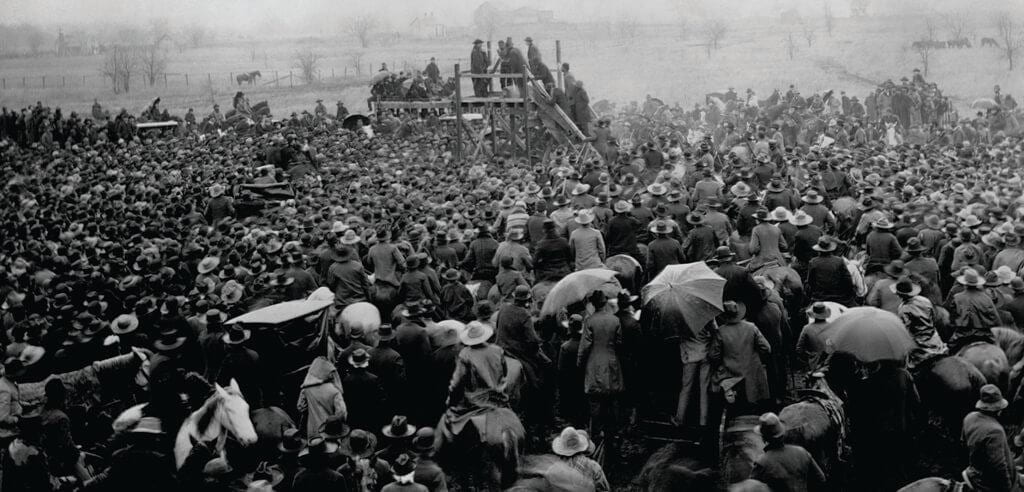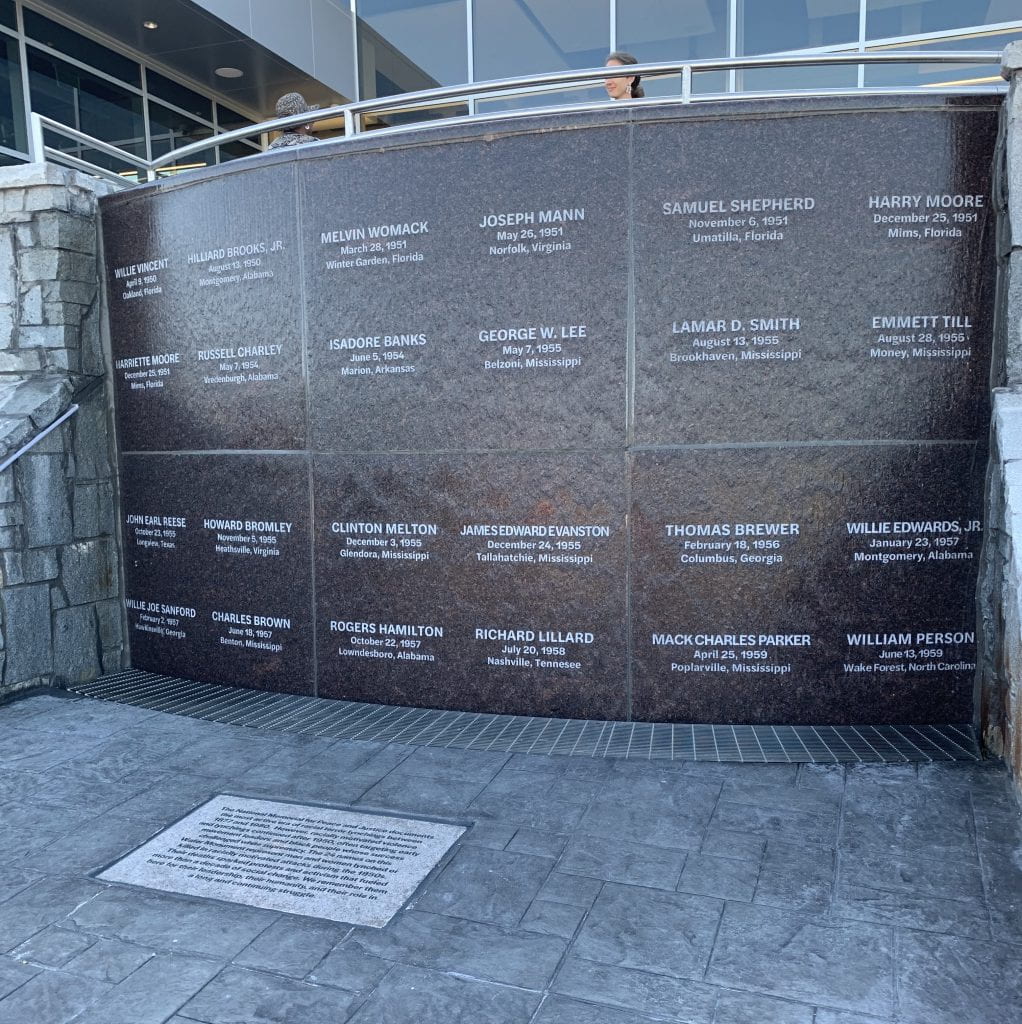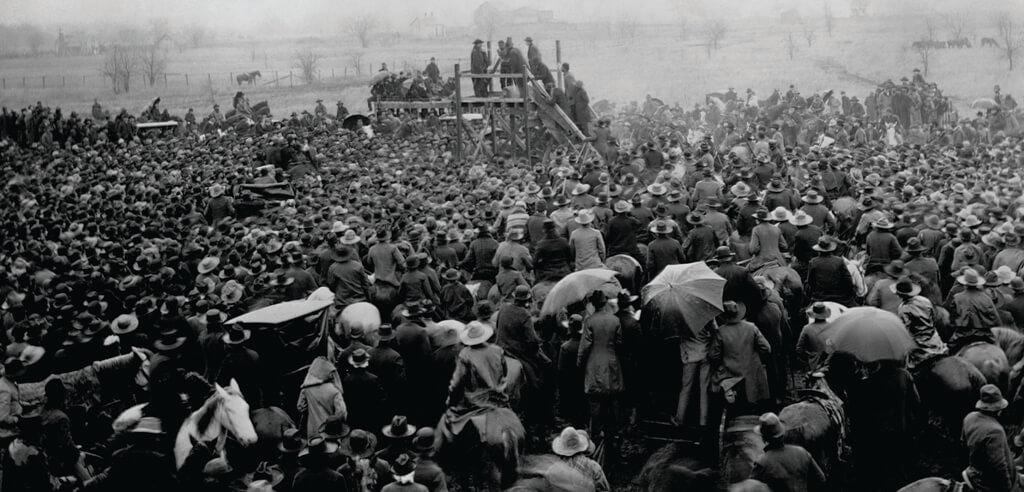On Interstat
by Carmelia Jones (student guest blogger)
On Interstate 65, about halfway between Birmingham and Montgomery, a confederate flag waves boldly and proudly above the tree line. One might be inclined to think that this flag still stands as a remnant of a bygone era, but the Alabama division of the Sons of Confederate Veterans erected the flag in 2005, the “commander” of the organization declaring: “We put the flag up so people could see it…We are showing off our heritage.” In Alabama and the rest of the South, there remains a sense of pride in the Confederacy, a nostalgia for a time when black bodies were owned and traded as commodities by white people who denied them human lives and insisted on their subservience. The Confederate Memorial Park, funded by the Alabama Historical Society ($600,000 of taxpayer money annually), provides an opportunity for schoolchildren to learn about the history of the Civil War as a war fought over “states’ rights” and to honor those who lost their lives for such a “just” cause. These memorials – hundreds throughout the state – recognize and honor the state’s history (and the government endorsement) of white supremacy and its continuing legacy.
In fact, when Bryan Stevenson moved to Montgomery in the late 1980s, he noticed that he could barely walk a few blocks without seeing some kind of monument or memorial to the Confederacy. What was conspicuously absent was any mention of the slave trade, or slavery, or enslaved peoples. In the 1850s, Montgomery was the most active space for the sale of human bodies, and while there was plenty of states and privately funded tributes to those who fought to protect the institution of slavery, the landscape did not hold space for those victimized by it. Mr. Stevenson insists that as a nation we still have not adequately acknowledged the truth of our past nor the legacy that the slave trade and mass enslavement of black people has on our communities today.

The National Memorial for Peace and Justice came out of a vision to change that landscape, to consecrate the space as a testament to the lives lost in the brutal effort to preserve white supremacy, and to change the conversation about how this continued effort impacts our current social, political and economic reality in the United States. The memorial enshrines the memory of over 4,000 individuals who were lynched between 1877 and 1950. Lynchings during this time period were often public spectacles, celebrations, a form of entertainment – spectators enjoyed deviled eggs and lemonade while black bodies were brutally tortured and thrown onto fire pits, law enforcement cheered along with the crowd and often participated in the brutality, and no one was ever held accountable for these acts of terror.
While the Memorial documents the most active era of racial terror lynchings, the EJI acknowledges that these instances of racially motivated violence did not stop after 1950. White supremacists continued to terrorize black communities by targeting early movement leaders and black activists who were successfully challenging white supremacy. On a national level, the response to these atrocities began to change — not, as we might hope, because the nation suddenly started caring about black lives, but because during World War II, U.S. officials became concerned that anti-American propaganda campaigns led by Japanese and German forces depicted the U.S. as a hotbed of “anti-Negro discrimination” and racial terror. White supremacists continued to kidnap, torture and murder black individuals as a way of perpetuating fear in black communities and maintaining control, but they began to make more concerted efforts to obscure these acts from national media attention.
On April 29, 2019, as part of the 30-year anniversary celebration of the Equal Justice Initiative and one year since the opening of the National Memorial for Peace and Justice, EJI consecrated a monument recognizing and honoring 24 victims of lynching in the 1950s. Their stories were told, their leadership in the struggle for social justice remembered, and their memories represented by relatives, friends, and members of their communities.

These are the names of 24 men and women who were lynched between 1950 and 1959:
Hillard Brooks, Junior, a 22-year old black man, was murdered on August 13, 1950, in Montgomery, Alabama. Accused by a white bus driver of “creating a disturbance” by refusing to honor the bus driver’s demand that he enter through the back of the bus, he was shot by a white police officer, leaving behind a wife and two children. No one was ever charged with Mr. Brooks’ murder.
Reverend Joseph Mann, a 38-year old black pastor, was kidnapped and set on fire in Norfolk, Virginia on May 26, 1951, by two white men who (according to Mann on his deathbed) told him they were sick of black people moving into white neighborhoods. Reverend Mann had recently given a sermon denouncing racial segregation. No one was prosecuted for Reverend Mann’s murder.
On April 9, 1950, a black man named Willie Vincent was abducted by three white men who beat him severely, fractured his skull, and left him for dead on the side of the highway in Oakland, Florida. It was widely suspected that this act of terror was carried out by members of the KKK, no one was ever convicted of Mr. Vincent’s murder.
A year later, on March 28, 1951, four members of the KKK abducted 27-year old Melvin Womack from his home in Oakland, Florida. They beat him, shot him and left him for dead. No one was ever charged with Mr. Womack’s murder.
Samuel Shepherd, one of the “Groveland Four” – a group of young black men wrongfully accused of raping a white woman – was murdered on November 6, 1951, in Umatilla, Florida. Ernest Thomas, one of the four, was lynched before the trial started in 1949. The other three were convicted in a racially biased trial, after which Thurgood Marshall was successful in winning a new trial for the men. After the judgment, Lake County Sherriff Willis McCall offered to transport two of the accused men – Mr. Shepherd and Mr. Irvin – back to the county jail. On the way, McCall ordered the two black men to get out of the van and change a tire. Their backs turned, he shot both of them without provocation, though he would later claim self-defense. Mr. Shepherd died from the gunshot wound, and McCall faced no charges and remained in office for several more terms.
Harry and Harriette Moore, influential voting rights activists in the NAACP, registered over 3,000 black voters in their community of Mims, Florida. On Christmas night in 1951, a bomb underneath their home exploded, killing Mr. Moore immediately. Mrs. Moore died from her injuries a few days later. No one was ever prosecuted for the bombing.
Russell Charley, a black man, was lynched on May 7, 1954, his body hidden in the woods. The NAACP demanded a full investigation by federal, state, and county authorities, but it didn’t happen, and no one was ever arrested or charged with Mr. Charley’s murder.
On June 5, 1954, the badly burned remains of Mr. Isadore Banks, a land-owning WWI veteran, were found chained to a tree in the woods near Marion, Arkansas. Likely targeted because of his financial success and rumors of an interracial romance between Mr. Banks and a white woman, this act of terror served to remind the black community that their successes would be met with derision and violence. No one was ever charged with Mr. Banks’ murder.
Reverend George W. Lee was the first black person to register to vote in Humphreys County, Mississippi since Reconstruction, and he was actively involved in voter registration with the NACCP. On May 7, 1955, Reverend Lee was shot and killed while driving home. The county sheriff claimed that Reverend Lee died in a car accident, insisting that the lead bullets found in his jaw were dental fillings. No one was ever prosecuted for his death.
On August 13, 1955, 63-year-old African-American veteran of World War I named Lamar D. Smith was shot and killed on the courthouse lawn in Brookhaven, Mississippi. His “crime” – encouraging local black men and women to register to vote. Several people witnessed Mr. Smith’s murder, and three white men were arrested, though the charges were later dismissed and no one was ever punished.
On August 28, 1955, 14-year-old Emmett Till was visiting Mississippi from Chicago when two white men kidnapped, shot, mutilated and threw him into the Tallahatchie River, alleging that he was whistled at a white woman. The white woman in question later said this never happened. All all-white jury acquitted the murderers after less than an hour of deliberation. The two men later confessed to the brutal murder.

On October 23, 1955, black residents in Longview, Texas had recently received a grant to build a new school, marking progress toward better education for black students. In response to this progress toward school desegregation, two white men drove by a cafe in a black community where John Earl Reese, a 16-year-old black teenager was dancing with his friends. The men fired shots into the cafe, killing John and wounding several others. The two white men were arrested for the shooting and convicted, though they received reduced and suspended sentences.
On November 5, 1955, a white store-owner in Heathsville, Virginia shot a 23-year-old black man named Howard Bromley because the white man claimed, he had ordered Mr. Bromley to leave the store and Mr. Bromley had refused, instead of trying to wrest the store-owner’s gun away from him. Despite the fact that witnesses denied this account, an all-white jury acquitted the store-owner after less than 30 minutes of deliberations and no one was ever punished for Mr. Bromley’s death.
On December 3, 1955, a friend of Emmett Till’s recently acquitted killers walked into the gas station where 33-year-old Clinton Melton, a World War II veteran and father of five, worked as an attendant. The man became angry with Mr. Melton for some unknown reason and even angrier because the owner of the gas station refused to fire him. Mr. Melton was shot and killed as he was preparing to drive home to his family that night. Despite the evidence against him, Mr. Melton’s murderer was acquitted in the same courtroom his friends had been acquitted a few months earlier.
On Christmas Eve in 1955, the body of James Edward Evanston, a 52-year-old African-American educator, was found in Long Lake, a few miles outside of Drew, Mississippi. His car was found nearby, along with a suicide note in which his last name was spelled incorrectly. Despite ample evidence that Mr. Evanston’s drowning racially motivated, no official local or state investigation was ever conducted, and no one was charged or punished for Mr. Evanston’s likely murder.
Dr. Thomas Brewer was a 72-year-old African American physician, voting rights activist and one of the organizers spearheading the school integration effort in Columbus, Georgia. On February 18, 1956, a white store-owner shot Dr. Brewer seven times, claiming self-defense. The grand jury of Columbus did not indict Dr. Brewer’s killer, and no one was ever held accountable for his murder.
Willie Edwards Jr.’s truck was found near Montgomery, Alabama on January 23, 1957. Mr. Edwards, however, was missing. Months later, on April 23, a local fisherman found Mr. Edward’s body when it washed up on the banks of the Alabama River. Law enforcement determined that the body was in too poor condition to determine the cause of death, and no investigation was conducted. In 1993, a white woman reported that her recently-deceased husband had confessed to the crime on his death bed, describing how four white Klansmen abducted Mr. Edwards at gunpoint and forced him to jump from a bridge to his death. Despite this information, no one was ever prosecuted for the murder of Willie Edward.
Willie Joe Sanford went missing in Hawkinsville, Georgia on February 2, 1957. His mutilated body was found wired to the undergrowth at the bottom of a creek on March 1. A local circuit judge determined that “only a frenzied mob could have accomplished it,” no one was ever prosecuted or convicted for Mr. Sanford’s murder.
Charles Brown, a member of the U.S. Air Force, was visiting a white woman in her Benton, Mississippi home on June 18, 1957, when the women’s brother shot and killed him for being “too friendly” with his sister. Despite the fact that the white man had a prior conviction for manslaughter and confessed to the shooting, a grand jury did not return an indictment and no one was ever prosecuted for Airman Brown’s murder.
According to his mother, Rogers Hamilton, a 19-year-old black man from Lowndesboro, Alabama, was kidnapped from his home by two white men on October 22, 1957. The men shot and killed Mr. Hamilton, allegedly for dating a black woman that they wanted for themselves. The local sheriff refused to call the murder a racially motivated lynching, and no one was ever punished for Mr. Hamilton’s death.
A 30-year-old black man named Richard Lillard was being held in a padded call in the Nashville City Workhouse when three white officers beat him to death. The officers claimed that Mr. Lillard had “gone berserk,” however, several witnesses testified that he had been begging for his life as he was being beaten. The three officers were tried for murder and acquitted by an all-white jury after less than an hour of deliberations.
On April 25, 1959, Mack Charles Parker, a young black man in his early 20s, was brutally beaten, shot twice in the chest and bound in chains before being dumped into the Pearl River in Poplarville, Mississippi. He was accused of assaulting a white woman, and although it was common knowledge that she had fabricated the claim to hide an affair with another man, a white mob lynched Mr. Parker before an investigation or trial took place. No one was ever charged for the murder of Mr. Parker.
On June 13, 1959, a black man named William Person was shot by a white man while he was running away because he didn’t want to work for the man. After shooting Mr. Person twice with a rifle, the man claimed he was just “horse playing,” and he was released without being charged. The man was later indicted and accepted a plea agreement for a reduced sentence if he paid Mr. Person’s widow less than $3,000.
We remember these men and women, their loved ones, and those they impacted both in their lives and through their deaths. By acknowledging and honoring their memory, we refuse to let their deaths be in vain. At the consecration of the memorial, to the rising chorus of ‘We Shall Overcome,’ family representatives of the deceased laid white roses on each victim’s name. Bryan Stevenson reminded the crowd to let three words define the ongoing struggle for equality and justice: hope, perseverance, and love. Hope because, as he says, hopelessness is the enemy of justice. Perseverance because the work is not nearly done. It is a constant struggle, an uphill battle, an unrelenting burden. We all have a part to play, and we must never give up on the dream. And finally, love, because while it’s natural to let violence and brutality perpetuate hate, we must not let hate keep us from loving, keep us from acknowledging and accepting our common humanity. To quote James Baldwin: “Love takes off the masks that we fear we cannot live without and know we cannot live within.” Only when we tell the truth about our past can we understand our present and start to heal for the future. Only then can the nation find “peace from its sins” and the freedman finds “freedom in his promised land” (W.E.B. DuBois 1903).
To learn more about the United States’ history of lynching, read the EJI’s report Lynching in America: Confronting the Legacy of Racial Terror.

